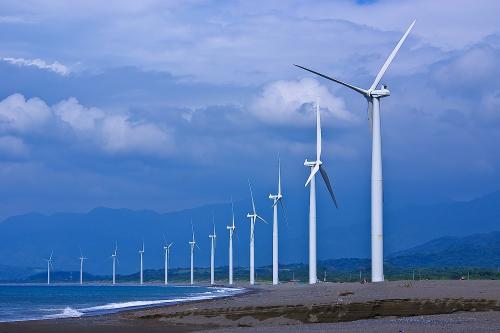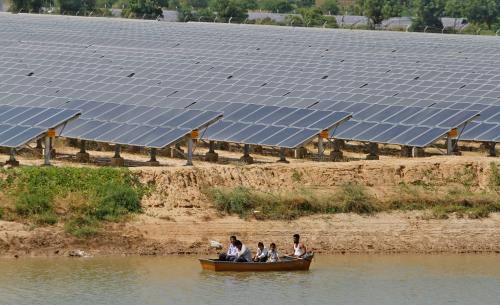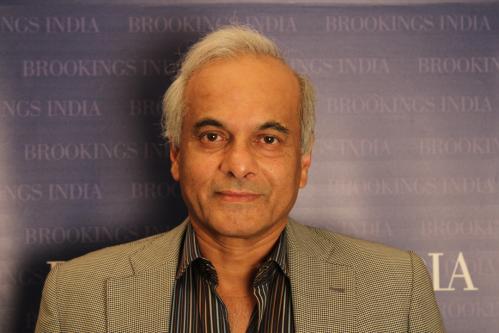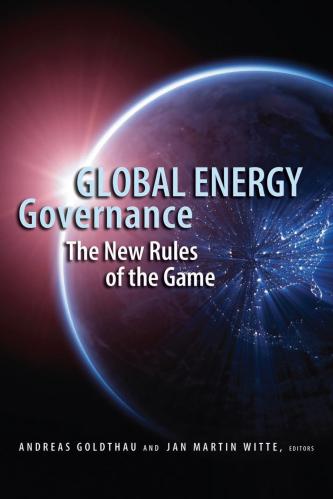Content from the Brookings Institution India Center is now archived. After seven years of an impactful partnership, as of September 11, 2020, Brookings India is now the Centre for Social and Economic Progress, an independent public policy institution based in India.
This column first appeared in the Indian Express, on February 2, 2015. Like other products of the Brookings Institution India Center, this is intended to contribute to discussion and stimulate debate on important issues. The views are those of the author.
In the aftermath of the Republic Day India-US summit and against the backdrop of global warming and weak oil prices, what rabbits must the finance minister pull out of his hat to lend credence to the pronouncements made by the prime minister last week and persuade investors that feasible action will match lofty rhetoric? This article responds to that question with specific reference to energy.
The PM told the business leaders gathered to hear him and US President Barack Obama that his objective was not simply to push India up the rank order in the “ease of doing business” index but to make it the “easiest business environment in the world”. He said that he would personally monitor major projects and that “speed” along with “scale” and “skill” would be the tripod on which the government would facilitate investment. The minister of state for commerce and industry made a comparably absolute remark in her introductory address. She said India had already the most liberal economic terms for foreign direct investment.
The CEOs must, no doubt, have been pleased. They may have wondered at the feasibility of such a grandiloquent commitment, but not at the sincerity of the PM’s conviction. But now, with the settling of the summit dust, they are asking the question: How will the government cut through the thicket of regulatory procedures, discretionary authority and vested interests that make it so difficult to do business? Will it move forward incrementally, with a focus on cleaning up the mess left behind by the previous government, or will it forge a radically different path? The former may improve our rank order in the business index but it won’t move us to the top of the list. The latter may also not get us top billing, but it would leapfrog us into a significantly higher quartile. The answer will be searched for in the fine print of the budget, for it is the next big economic occasion.
The Republic Day summit has focused attention on clean energy, technology and global warming. The civil nuclear deal has been reinvigorated and this should expedite the generation of nuclear energy. Solar and wind power have been provided a fillip with a $4 billion financial package though various US agencies. And though there was no agreement to cap greenhouse gas emissions a la the US-China agreement and the PM did not dilute the government’s official stand that individual countries bear “common but differentiated responsibilities” to mitigate and adapt to global warming, there was enough in the interstices of the public statements to infer that India and the US might well find common ground before the forthcoming Paris summit on climate change. The PM did, for instance, make clear that it was in our national interest to push the economy onto a low-carbon growth trajectory.
Against this backdrop, it would be a surprise if the FM did not dedicate a long paragraph on clean energy in his budget speech. The expectation is that he will look to deliver a robust and holistic package of fiscal incentives, subsidies, duty structure rationalisation and low-cost financing to support renewables and clean energy technology. And that these proposals, while building on the incentives that are already in place (that is, accelerated depreciation for wind power, feed-in tariffs for solar, renewable power obligations and subsidies for electric vehicles), will be significantly more attractive. I hope this expectation is realised for it may otherwise be difficult to deliver even a small percentage of the government’s aspirational target of 100 gigawatt (GW) of solar (current 2.5 GW) and 50 GW of wind (current 26 GW) power by 2022, especially given that the drop in oil prices has raised the bar on the competitiveness of renewables.
The FM should, of course, go beyond this paragraph. Three hard facts have a direct bearing on the nexus between economic development, energy demand and environmental protection. The nature of this nexus and its consequences must also be addressed. First, India will remain dependent on coal, oil and gas for years to come, even if technological development reduces the costs of solar, wind and bio to grid parity. This is because it takes time and money to overhaul an existing energy system. Thomas Edison illuminated lower Manhattan in the 1880s, but it was not until the mid-1930s that US manufacturing switched fully from steam power to electric power. It could not do so earlier because the factories were not appropriately designed. Most had to be reconfigured, some totally rebuilt. A similar situation faces India. Its energy system is built around fossil fuels. To create a new system with sufficient scale and geographic coverage around renewables will take decades, and $100 billion.
Second, billions have been wiped off the balance sheets of energy companies because of the slide in oil prices. They do not have the investible surplus to invest in high risk, high cost exploration ventures. India will not, then, find it easy to attract international risk capital. Third, coal will remain the bulwark of the energy sector. The minister of power has, for instance, set himself the goal of doubling coal production from the current 500 million tonnes to 1 billion tonnes by the end of this decade. Coal is the dirtiest of fossil fuels, so this target will not sit comfortably with the goal of decarbonisation.
In the face of these truths, the FM should supplement his budgetary proposals on energy with two broad initiatives. The first should be directed towards accelerating the use of gas. This is because gas is the most environmentally benign of fossil fuels. It is cheaper than oil and now, with spot LNG prices hovering around $9 per million British thermal units (mmbtu), which converts to a variable cost of around Rs 4 per kilowatt hour for power utilities, it is affordable. And it is in relative abundance in the region. The second should look to encourage investment in technologies that “green” fossil fuels and limit emissions levels.
Specifically with regard to gas, the FM should impose a “gas power obligation” on distribution companies. This would require them to purchase a certain percentage of their power requirements from gas-based generators. He should also accord infrastructure status to investment in the creation of a national pipeline grid and conjoin the routing of this grid (or at least a part of it) to the national highway programme, so as to expedite the substitution of the more-expensive diesel for CNG. And with regard to “green” technology, he should incentivise Coal India and other operators to deploy technologies like coal gasification and combine with academics, laboratories and research institutions to develop and deploy methods to capture and sequester carbon emissions.
The PM has raised expectations of a radically reformist budget. The FM must not disappoint. On energy, the route is clear. Policies have to be put in place that “green” our current fossil fuel-dominated energy basket and, at the same time, build the foundations for a non-fossil fuel energy future.
The Brookings Institution is committed to quality, independence, and impact.
We are supported by a diverse array of funders. In line with our values and policies, each Brookings publication represents the sole views of its author(s).









Commentary
Op-edThe Green Budget
THE INDIAN EXPRESS
February 3, 2015